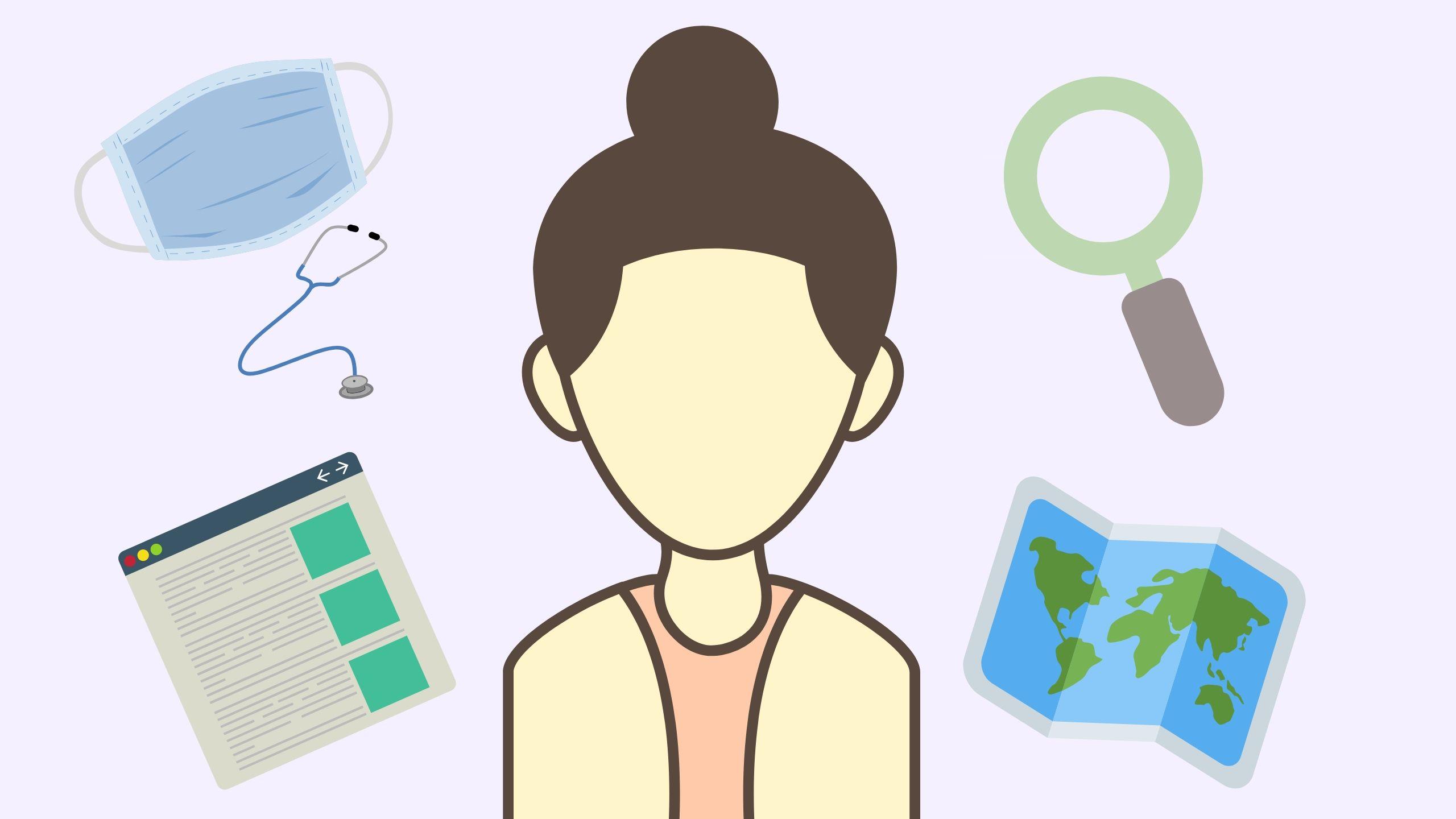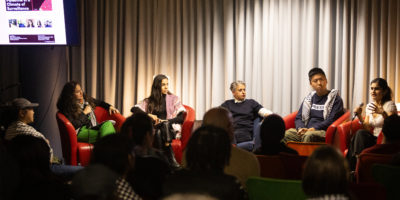By Kayla Zhu
Ryerson researchers are currently working on various projects aimed at addressing the COVID-19 pandemic.
The projects are funded by the Canadian Institutes of Health Research (CIHR), which announced $27 million in funding for coronavirus research on March 6 and an additional $25.8 million in funding on March 19. This totals to over $52 million in funding across 96 federally-funded research projects.
According to CIHR website, the funding supports researchers who are focusing on “developing and implementing measures to rapidly detect, manage and reduce the transmission of COVID-19.” This includes research on diagnostics, vaccines, transmission dynamics, public health response, governance and other areas.
Ryerson researchers in nursing, industrial engineering and geography are leading projects or collaborating with other researchers to address various areas of the outbreak.
Research teams across Canada had a week to submit their applications for funding after the announcement on Feb. 10. Teams were selected for the first round of funding through the COVID-19 Rapid Research Funding Opportunity.
The second round of funding is a portion of the federal government’s $275 million investment in research and development that Prime Minister Justin Trudeau announced on March 11. This investment is a part of the government’s $1 billion COVID-19 Response Fund.
Addressing stress and anxiety among Chinese-Canadian populations
Ryerson nursing professors Josephine Wong and Mandana Vahabi are currently in charge of a project called PROTECH, or Pandemic Rapid-response Optimization To Enhance Community-resilience and Health.
PROTECH focuses on supporting those experiencing high levels of stress, anxiety, stigma and racism around COVID-19, with a focus on Chinese-Canadian populations.
The team is creating a website that provides accurate and timely information on COVID-19 in English, simplified Chinese and traditional Chinese. The website will also include practical ways to cope with fear and anxiety through live video meetings and live chat features.
Their goal is to support individuals such as frontline workers, people or relatives of people who have tested positive, as well as people in quarantine.
Wong said while she believes prevention of transmission is important in public health messaging, there are many “hidden stories” among the affected.
“We know that from a point of view, going beyond the biomedical part of it, we need to actually deal with the psychosocial part,” said Wong.
Wong was inspired to create PROTECH after previous experience from working at the Severe acute respiratory syndrome (SARS) Control Centre at Toronto Public Health in 2003, eventually leaving to teach at Ryerson in 2009. She said that after her shifts, she collaborated with Chinese community groups to address the needs of her community. She said that the public health response was “chaotic” and that messages from all levels of government were “inconsistent.” On top of it all, the Chinese community was experiencing high levels of racism.
This time around, Wong wanted to take a preventative approach and build from her experience in 2003. She said a lack of accurate information and high levels of anxiety could cause people to go to health care facilities and overload workers.
Wong and her 20-person team hope PROTECH will serve those who may not have the strongest support systems, including older or isolated populations.
For people who don’t have a way to get information or a referral contact with a service provider, PROTECH could be a big help, said Wong.
The team includes clinicians, researchers and community leaders from churches, business associations, and other groups. She is also working on a way to make the resource accessible to older populations who may not know how to use the internet.
“What we’re doing is something that is about access,” said Wong.
Identifying areas in need of resources or support
Ryerson geography professor Lu Wang and psychology professor Lixia Yang are working on a project that will map where people go and how they behaved, before and after the outbreak.
The project will explore the perception of COVID-19 within Toronto’s Chinese community and how risk perceptions can influence individuals’ prevention behavior, including practices such as social distancing and self-isolation.
Wang and her team will also examine how public spaces are affected by how people perceive risk and their prevention behavior. They are using spatial analysis, mapping and qualitative methods. This is expected to allow the team to identify which areas need more resources or support.
The team will conduct community surveys on risk perception, prevention behavior and daily mobility to better understand how individual action can affect the transmission of the virus.
Wang and Yang are working alongside Dongmei Chen, a Queen’s University geography and planning professor. Other organizations involved include the South Riverdale Community Health Centre, Centre for Immigrant and Community Services, The Hubei Association of Canada and the University of Toronto Chinese Student and Scholars Association.
The team aims to inform future public health responses in setting policies, allocating resources and setting vaccine priority.
Modelling healthcare workers’ workloads
Patrick Neuman, a Ryerson mechanical and industrial engineering professor, is working with nurses and personnel to develop a model that simulates nurses’ work patterns.
The model is aimed at analyzing how extra stress from the COVID-19 outbreak on nurses’ workloads affects their infection control routines and care delivery. Infection control routines include hand washing, wearing personal protective equipment and disinfecting surfaces.
Neuman was working on simulation models prior to the COVID-19 pandemic and decided to investigate different configurations in the hospital or different patient situations that may strain a nurse’s workload, which Neumann said is already “at over 100 per cent.”
“This was sort of the core idea—what’s the consequences of these infection control routines for the workload of the healthcare professional?” said Neumman. “Are we able to then use these kinds of tools to do some advanced planning in these sorts of scenarios?”
Neuman’s team continues to work closely with front line personnel to build the models. He said it’s been “absolutely essential” to understand how nurses do their work. The team is looking into factors such as when nurses choose to see a certain patient, which tasks they need to do, and the sequencing of their work.
“We’ve also had good support from a couple of individuals who have allowed us to videotape them simulating their work,” said Neuman. “That let’s us then start to look at the postures and physical workloads associated with each of the tasks as well.”
Examples of situations that the model would explore include seeing the impact of nurses going through infection control routines for one COVID-19 patient versus a large number of COVID-19 patients. If nurses and health care professionals are getting too tired, Neuman said it could lead to medical errors or errors in the infection control routine.
According to JAMA Network data from Feb. 11, 1,716 health care workers were infected in China—3.8 per cent of the total cases. As of March 22, 4,824 health care workers in Italy tested positive to COVID-19, representing nine per cent of the total cases, according to GIMBE or Italy’s Group for Evidence-based Medicine.
Neuman said that it’s a “hit on both sides of the ledger” if healthcare workers become infected. “If the workforce, the professional health care workers are getting sick, you lose the ability to care for the population but you also increase the volume of people that need to be cared for.”
Addressing stigma through health care and disaster management practices
When Ryerson nursing professor Charlotte Lee saw a Facebook call-out for collaborators for York University disaster and emergency management professor Aaida Mamuji’s research project, she responded.
Initially, she was only emailing studies and offering some insights, but Lee ended up joining the team and began working on a proposal with Mamuji.
Their project—Destigmatizing Chinese Communities in the face of COVID-19: Emergency Management Actions to Address Social Vulnerability in Toronto and Nairobi—aims to investigate how Chinese communities in the GTA and Nairobi, Kenya are reacting to the virus and stigma around their community.
The research team is conducting interviews in Toronto and Nairobi, two areas with large Chinese diasporic communities, according to Lee.
Lee said the stigma is a relevant issue in both health care research and disaster management, and that the project “marries” the two disciplines. Beyond stigma, the project aims to understand how Chinese communities perceive the virus.
“We want to understand the experiences and the actions of Chinese communities in face of COVID-19, not just in a case of stigma, but how their lives are affected,” said Lee. “We’re going to try to probe into the issue of work, childcare, [and] just living day-to-day in Toronto.”
The project will also look into how Chinese communities are dealing with fear, misinformation and disinformation around the virus.
Lee said she brings a health care and Chinese lens to the research. “I feel that being Chinese I understand that sometimes our cultural belief creates a gap that may make us a little bit more sensitive to being perceived as being treated differently,” said Lee.
As an example, Lee said her grandmother who only trusts Chinese medicine may not understand advice from medical professionals such as quarantining for 14 days after travelling.
“I think she would think, ‘Are you serious, I don’t believe in any of this crap, are you just making this up because this thing comes from China?’” said Lee. “I can see, with some people, there is mistrust.”
One of the teams’ goals is to educate Chinese communities about how to interact and interpret public health messages or advice from health care professionals. “I think being Chinese myself, I feel that education in my community can really help a lot of people be more empowered and resilient,” said Lee.
She hopes the findings from their research will educate people about the real world effects of stigma and provide a framework that will help prepare governments to respond to the next crisis.
Tracking social media misinformation
Two members of Ryerson’s Social Media Lab, Phillip Mai, director of business and communications and Anatoliy Gruzd, director of research, are working with Royal Roads University researchers on tackling social media misinformation about COVID-19.
The two-year study, which began this year, “Inoculating Against an Infodemic: Microlearning Interventions to Address CoV Misinformation,” seeks to reduce the spread of COVID-19-related misinformation through education. The team has created a website to track social media misinformation and post up-to-date information on the virus.
Ryerson researchers are studying to understand how misinformation about the virus spreads on social media, what types of false claims are likely to go viral, who is doing the spreading and who is being impacted. They are gathering publicly available data on social media platforms and retrieved using either in-house data collection tools such as Netlytic to work with Twitter and YouTube data. Royal Roads researchers will use these findings to come up with measures that can be used to educate the public against misinformation.
Mai said the current media landscape is filled with misinformation about fake cures and fake COVID-19 tests.
“It’s also a playground for scammers who are playing on people’s fears to steal their money and their identity,” said Mai.
The research idea emerged out of the Social Media Lab’s previous work investigating misinformation around the 2016 American presidential election. “From our research and those of our peers, we know that every major event is now accompanied by misinformation,” said Mai. “And this pandemic is no different.”
Mai said widespread misinformation can cause people to make bad decisions, create panic, cause political instability, and contribute to a recession in Canada and around the world.











Kathleen
That was very interesting. Overcoming mistrust that is based on misinformation or incomplete information is a challenge especially in a crisis. I hope this work continues post-pandemic.